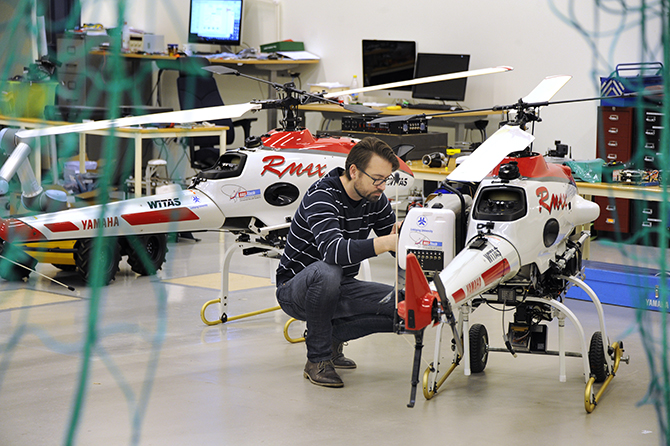WASP Extended to AI
Anders Ynnerman, Linköping University
WASP, the Wallenberg Autonomous Systems and Software Program, was launched in 2015 to advance Sweden into a leading position internationally in the area of autonomous systems and their associated software. Autonomous systems are systems that perform advanced tasks and, in many cases, interact with humans, adapting to their environment through information derived from sensors or stored knowledge. For example, robots can be autonomous systems, as can various software applications. Many autonomous systems can also form intelligent systems-of-systems. An example in WASP is the research on collaborative unmanned aerial vehicles (UAVs) forming a fleet of drones with a common mission. Since software is what drives autonomous systems and determines their capabilities, the study of software is crucial in the research and development processes for autonomous systems.

The WASP program was designed to facilitate world-leading academic research on autonomous systems, as well as providing state- of-the-art graduate education in the area, and fostering fruitful interactions between academic researchers in Sweden and Sweden's leading technology companies. With initial funding of 2 billion SEK, the program has been the largest individual research program in Swedish history right from the beginning! It involves researchers in Electrical Engineering, Computer Engineering, and Computer Science at Sweden’s five major Information and Communication Technology (ICT) universities: Chalmers University of Technology, the KTH Royal Institute of Technology, Linköping University, Lund University, and Umeå University.
During the first couple of years of the project, WASP focused on strengthening, expanding, and renewing Swedish competence in autonomous systems and software through funding the strategic recruitment of outstanding leading and young researchers in the field, and by establishing a challenging research program and a national graduate school, and initiating research and development collaborations with Swedish companies.
2017 was the centenary year for the Knut and Alice Wallenberg Foundation (KAW), which provided the funding to establish WASP in 2015. The foundation has a long-standing tradition of contributing towards fundamental research to support the development of new technologies that will assist the long-term development of Sweden’s national research and industrial concerns. In line with that tradition, and honouring the centenary of KAW, the foundation made a jubilee donation committing to a total of 1.6 billion SEK over ten years to support research in two of the most important technologies for the future: quantum technology and artificial intelligence (AI).
As a result of this generous donation, the WASP program was extended (in late 2017) to being the Wallenberg AI, Autonomous Systems and Software Program (still known as WASP) and granted 1 billion SEK to build up competence in various aspects of AI – such as machine learning, the underlying mathematics needed for AI software, and deep learning (which is a technique for implementing machine learning that uses multi-layered artificial neural networks to deliver state- of-the-art accuracy in a large variety of tasks like object detection, speech recognition, and language translation, with more applications appearing continuously). The universities in the program (Chalmers, KTH, Linköping, Lund and Umeå), along with Swedish companies, will also contribute towards the funding for the WASP research.
With this additional funding, WASP will man the frontier of AI research and development in Sweden. The grant will also make it possible to develop new graduate schools in AI and recruit senior AI researchers to Sweden. In addition, WASP has reserved 70 million SEK to build a computational infrastructure that will benefit the whole field of AI in Sweden.
The AI research within WASP will be led by KTH researchers, with Professor Danica Kragic, from the School of Electrical Engineering and Computer Science (EECS) at KTH, steering the research on machine learning and next generation AI, while Professor Johan Håstad, also from EECS, will be in charge of the research on mathematical principles underlying AI. During the spring, one of the challenges has been to formulate how the AI expansion within the program will influence the overall research areas of WASP.
“During recent years, the developments in AI based on self-learning systems (such as the advent of autonomous cars, Google translate and medical expert systems) have made the world sit up and take notice. The grant from the Knut and Alice Wallenberg Foundation gives Sweden a fantastic opportunity to develop our fundamental understanding of such new systems, which is vital in order to further the development and uptake of these new technologies by Swedish society,” says Lars Nielsen, the Program Director for the Wallenberg AI, Autonomous Systems and Software Program.